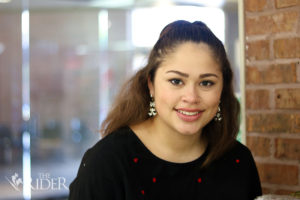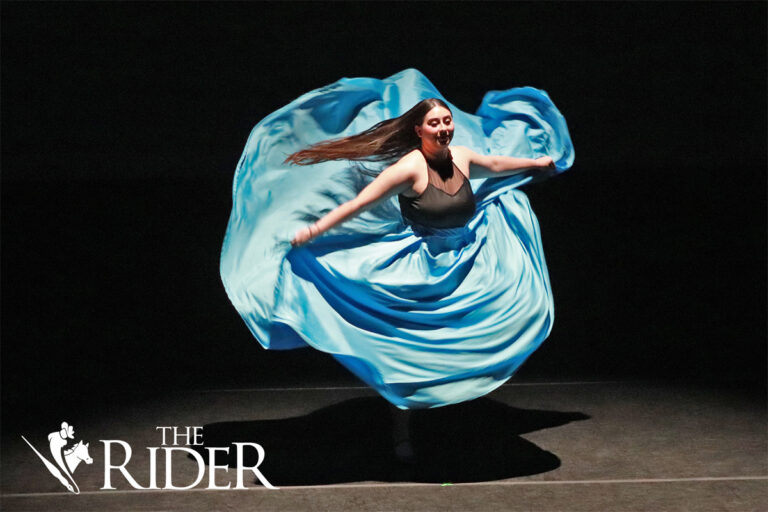
 “Honestly, I’ve heard about [Charro Days] and I’ve gone to it one time and it was something really impacting. So, I believe a lot of people should actually be attending it, because it’s a good way to get out and interact with people, especially down here, because, I’ve noticed in this university, there’s not a lot of interaction. … But, Charro Days, I like it a lot. You get to grow as a community, be with people [the] same as you and you get to interact.”
“Honestly, I’ve heard about [Charro Days] and I’ve gone to it one time and it was something really impacting. So, I believe a lot of people should actually be attending it, because it’s a good way to get out and interact with people, especially down here, because, I’ve noticed in this university, there’s not a lot of interaction. … But, Charro Days, I like it a lot. You get to grow as a community, be with people [the] same as you and you get to interact.”
Gaudencio Reyna
Information systems senior
 “So, in Canada, we don’t have Homecoming or [Charro Days], which is kinda weird, but also cool. I haven’t heard of Homecoming before, but I guess that’s because I’m from a small suburb town in Ottawa. So, like, it’s really small and no one goes out of there, so you know the same people. So, I guess there’s no Homecoming, but in the bigger cities, I’m sure there’s something like that.”
“So, in Canada, we don’t have Homecoming or [Charro Days], which is kinda weird, but also cool. I haven’t heard of Homecoming before, but I guess that’s because I’m from a small suburb town in Ottawa. So, like, it’s really small and no one goes out of there, so you know the same people. So, I guess there’s no Homecoming, but in the bigger cities, I’m sure there’s something like that.”
Meghna Turlapati
Theatre design freshman
 “Homecoming, no estoy muy segura, exactamente, que es Homecoming. Pero Charro Days, sí estoy emocionada por eso. Es la cultura de Matamoros [Tamaulipas, México,] y Brownsville, algo que no se hace en diferentes lugares. También, aparte, se juntan muchas personas del Valle. Se juntan aquí en la ciudad de Brownsville y estoy emocionada por eso. Porque es una fiesta folklórica y una fiesta de cultura”.
“Homecoming, no estoy muy segura, exactamente, que es Homecoming. Pero Charro Days, sí estoy emocionada por eso. Es la cultura de Matamoros [Tamaulipas, México,] y Brownsville, algo que no se hace en diferentes lugares. También, aparte, se juntan muchas personas del Valle. Se juntan aquí en la ciudad de Brownsville y estoy emocionada por eso. Porque es una fiesta folklórica y una fiesta de cultura”.
Rita Salazar
Estudiante de último grado de inglés
 “Charro Days is a celebration between the communities in Brownsville and Matamoros [Tamaulipas, Mexico], but I’m not really a fan of Charro Days. … It’s a cliché. It’s a stereotype. I think it’s only celebrated [on] the border. I believe in Mexico, they don’t even know what Charro Days is. It’s only on the border. … I don’t know what Homecoming is. The only positive thing about Charro Days is the communities have a nice meeting, reunion, and they get to share their similarities and foreign relations. I think Charro Days enhances those relations.”
“Charro Days is a celebration between the communities in Brownsville and Matamoros [Tamaulipas, Mexico], but I’m not really a fan of Charro Days. … It’s a cliché. It’s a stereotype. I think it’s only celebrated [on] the border. I believe in Mexico, they don’t even know what Charro Days is. It’s only on the border. … I don’t know what Homecoming is. The only positive thing about Charro Days is the communities have a nice meeting, reunion, and they get to share their similarities and foreign relations. I think Charro Days enhances those relations.”
Francisco Arredondo
Environmental science graduate student





